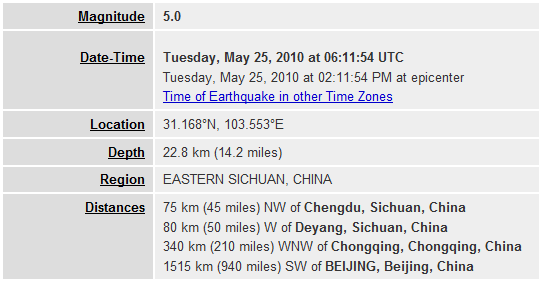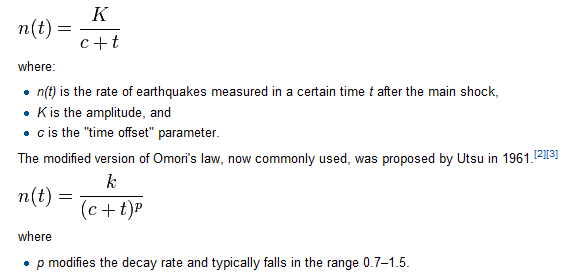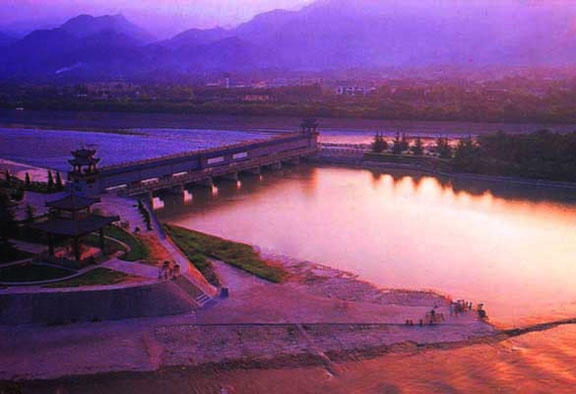We’ve just passed the two-year mark since the 2008 Sichuan Earthquake and aftershocks are making headlines again. Many of Chengdu’s residents have been chattering about the 5.0 magnitude aftershock which quietly shook Chengdu shortly after 2pm this afternoon. Aside from the inevitable “did you feel that?”, I’ve been hearing a lot of questions like: is it normal for aftershocks to occur this far out from the initial quake? What’s the likelihood of today’s aftershock and how long will these continue? Obviously concrete answers to these questions are difficult to obtain, but I spent a few minutes brushing up on aftershocks and learned something new.
Although there were no reported fatalities, today’s quake received local and national news coverage, making it the talk of the day in Chengdu.
The Ground Shakes Again
That unmistakably aftershock feeling where no one talks and eyes dart around the room has become somewhat of a staple of post-2008 Chengdu, but that has been changing.
Put simply: when an aftershock happens now, people don’t expect it because it’s been a year and a half since we’ve collectively experienced that. According to the Wikipedia page dedicated to listing the location and magnitude of more than 250 aftershocks since the 2008 Sichuan Earthquake, we haven’t experienced an event like today since mid-January 2009 (which is approximately the time that we were cursing the Chengdu cold while prophecizing the outcome of the 2008 financial crisis). It feels like a long time ago because it is.

What’s the Likelihood?
Not great – so don’t hold your breathe for any more aftershocks of this size because they are uber-unlikely. Although there are a number of techniques for calculating the chance of this kind of seismic event, they all provide variations on the following principle: they reduce in size and frequency, very quickly.
Omori’s Law
According to the most widely trusted (and oldest) aftershock theory published by Fusakichi Omori over a hundred years ago, aftershock frequency decreases by roughly the reciprocal of time after the main shock. This is actually much simpler than it looks:

According to these equations, the rate of aftershocks decreases quickly with time. The rate of aftershocks is proportional to the inverse of time since the mainshock. Thus whatever the odds of an aftershock are on the first day, the second day will have 1/2 the odds of the first day and the tenth day will have approximately 1/10th the odds of the first day (when p is equal to 1). These patterns describe only the mass behavior of aftershocks; the actual times, numbers and locations of the aftershocks are ‘random’, while tending to follow these patterns.
Painful Memories
I have vivid memories of the discomfort and unease brought about by the hundreds of aftershocks after the 8.0 magnitude quake in 2008, but they almost feel like a distant memory by now. Those memories have been replaced with newer memories, but as soon as I sense the ground begin to shake from deep under my feet, it comes right back. Local residents who had friends and family members injured, killed or made homeless by the seismic event which took 87,000 lives.
Fortunately no one appears to have sustained serious injuries due to today’s aftershock, but Chengdu was once again sternly reminded of the tragic events that unfolded on May 12, 2008.
